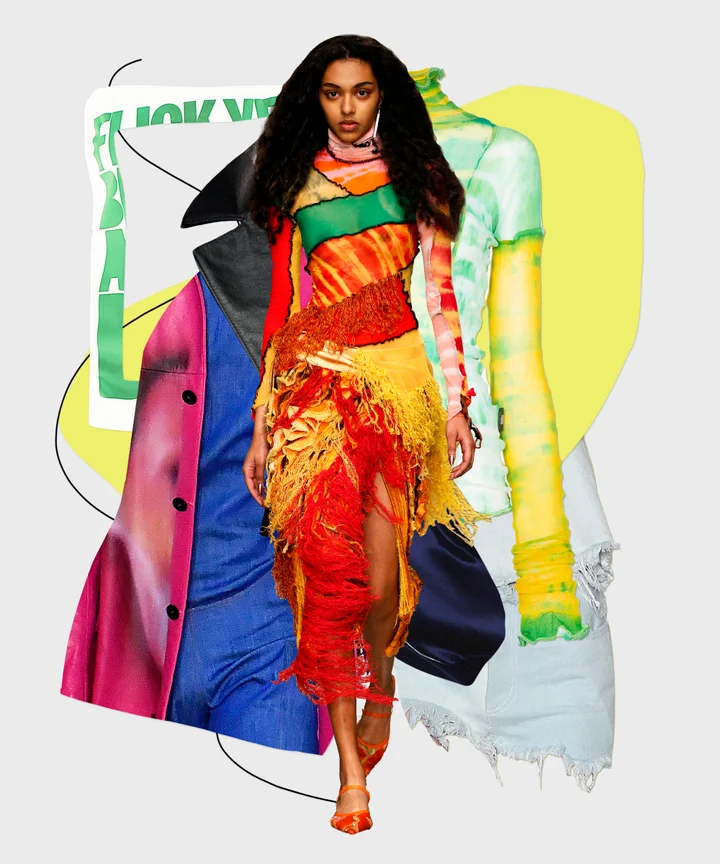Cheery Period Fashion: Eastern Wear Pakistan Styles for every single Occasion
Cheery Period Fashion: Eastern Wear Pakistan Styles for every single Occasion
Blog Article
Open the Secrets of Classic Eastern Put On
Exploring the enigmatic world of classic Eastern wear looks into a world where artistry, background, and society assemble to develop garments that go beyond mere textile and thread. The elaborate tapestry of practice intertwined with modern aspects uses a glimpse right into a globe where every stitch informs a story, every motif a sign of importance. Introducing the tricks behind these creations unveils a tapestry of heritage waiting to be deciphered, inviting one to journey via the ethereal elegance and aura of Eastern style.
Background of Eastern Style
The background of Eastern style go back centuries, reflecting the rich social heritage and practices of diverse regions across Asia. Each region flaunts its distinct styles, materials, and layouts that have actually been affected by variables like environment, faith, social condition, and profession paths. eastern wear pakistan. The elaborate silk garments of China represent sophistication and class, while the vibrant saris of India showcase a kaleidoscope of patterns and colors.
In Japan, the kimono has actually been an icon of custom and refinement for generations, with different designs used for various celebrations. The background of Eastern fashion is a tapestry of innovation and practice, mixing old methods with contemporary influences to create a vibrant and ever-evolving sector.
Value of Conventional Outfit
Traditional clothes functions as a cultural symbol, symbolizing the values, ideas, and heritage of neighborhoods in Eastern cultures. eastern wear pakistan. These garments are not simply pieces of fabric but are symbolic representations of the rich history and customs passed down through generations. In Eastern cultures, traditional outfit plays a significant role in events, events, and day-to-day live, mirroring the social status, local associations, and even marital status of people
The value of standard clothes goes beyond appearances; it is a means for people to link with their roots and share satisfaction in their cultural identification. Each garment, from the complex sarees of India to the streaming hanboks of Korea, carries with it a story of craftsmanship, significance, and significance that is deeply ingrained in the textile of society.
Moreover, traditional outfit functions as an aesthetic language, communicating tales of durability, unity, and triumph. By wearing these garments, people not only honor their heritage but additionally add to the conservation and celebration of their cultural tradition.
Evolution of Eastern Embroideries
Eastern embroideries have an abundant history that covers centuries and have actually constantly evolved to integrate varied social impacts and respond to moving imaginative trends. The advancement of Eastern needleworks can be mapped back to old worlds where detailed designs were hand-stitched onto materials utilizing standard strategies.

Today, Eastern needleworks continue to progress, mixing traditional craftsmanship with modern design sensibilities to create ageless pieces that commemorate the charm of multiculturalism and creative technology.
Elegant Fabrics in Eastern Use
Luxurious textiles play a pivotal role in boosting the visual appeal and top quality of Eastern wear, boosting the total attraction and class of traditional garments. Eastern wear is renowned for its opulent fabrics that not only reflect the area's abundant cultural heritage however also signify style and elegance. Silk, a fabric synonymous with deluxe, is often made use of in crafting Eastern attire, passing on a lustrous luster and a soft, smooth structure. The great strings of silk not only drape perfectly yet additionally add a touch of overindulgence to attire.
In addition to silk, textiles like velour, brocade, and chiffon are also typically included in Eastern wear. Velvet brings a deluxe and regal feeling to traditional ensembles, while brocade, with its metal strings and intricate patterns, adds a Get More Information touch of majesty. Chiffon, on the other hand, is preferred for its ventilated and light-weight qualities, making it a prominent selection for streaming shapes and fragile embellishments. These lavish fabrics not only raise the visual charm of Eastern wear yet also ensure a sense of improvement and sophistication that transcends time.
Incorporating Eastern Fashion Today
In contemporary fashion landscapes, the combination of Eastern influences offers an unified blend of social heritage and modern-day aesthetics. Designers and fashion enthusiasts alike are embracing the rich tapestry of Eastern fashion, integrating conventional elements into modern silhouettes and styles. From detailed embroidery to dynamic shades and glamorous materials, Eastern fashion today offers a diverse array of options that satisfy a global target market.
One means Eastern fashion is making its mark in modern closets is with the adjustment of traditional garments such as the bathrobe, saree, or qipao into daily wear. These items, when scheduled for special occasions, are now reimagined in more informal types, enabling their unification into daily fashion selections. Furthermore, the usage of typical patterns and motifs in Western-style apparel adds a touch of unique style to modern-day clothing.

Final Thought
In verdict, checking out the rich history, significance, and advancement of Eastern fashion reveals an ingrained link to heritage and values. The luxurious materials and detailed needleworks of Eastern use showcase the adaptability and eternity of traditional styles. Including Eastern influences in contemporary style enables a fusion of practice and technology, developing a harmonious equilibrium between the past and the existing.
Lavish fabrics play an essential role in raising the visual allure and top quality of Eastern wear, improving the total appeal and class of conventional read here garments. Developers and style enthusiasts alike are embracing the abundant tapestry of Eastern style, incorporating traditional aspects right into contemporary silhouettes and designs. From detailed embroidery to extravagant fabrics and dynamic colors, Eastern fashion today uses a varied variety of choices that cater to a worldwide audience.
One way Eastern fashion is making its mark in contemporary wardrobes is through the adaptation of typical garments such as the kimono, saree, or qipao right into day-to-day wear. The extravagant textiles and detailed embroideries of Eastern use showcase the adaptability and eternity of conventional layouts.
Report this page